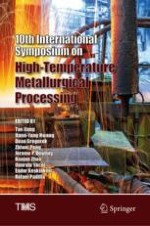2019 | Buch
10th International Symposium on High-Temperature Metallurgical Processing
herausgegeben von: Prof. Tao Jiang, Prof. Jiann-Yang Hwang, Dr. Dean Gregurek, Dr. Zhiwei Peng, Dr. Jerome P. Downey, Prof. Baojun Zhao, Prof. Dr. Onuralp Yücel, Prof. Dr. Ender Keskinkilic, Dr. Rafael Padilla
Verlag: Springer International Publishing
Buchreihe : The Minerals, Metals & Materials Series
